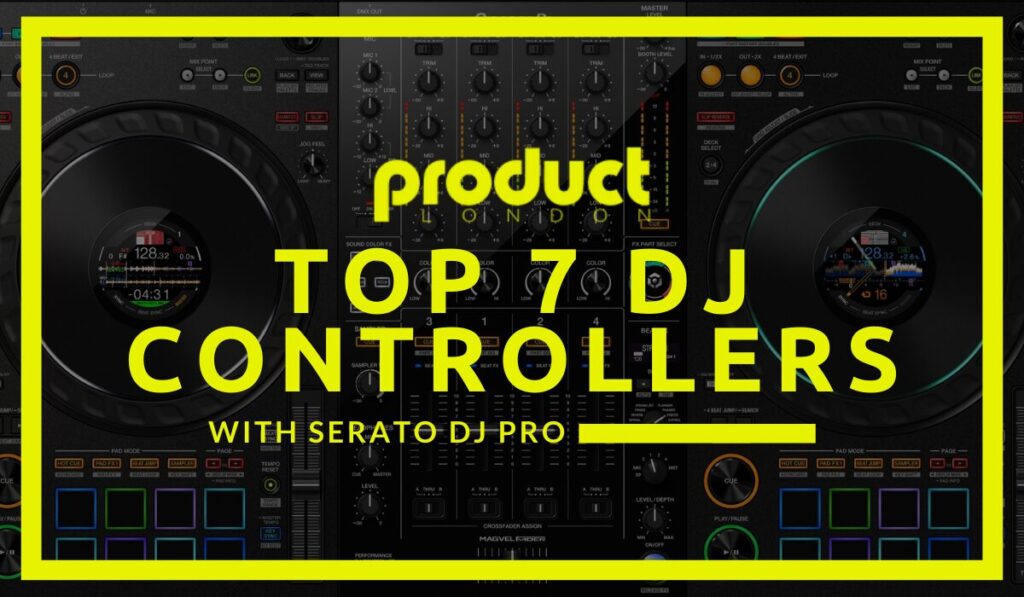Aspiring DJs often grapple with critical mistakes that can hinder their performance quality. First, mishandling Low EQ can muddy the mix; use high-pass filters and careful adjustments for balance. Second, avoid redlining by managing gain levels and monitoring audio peaks closely. Third, prevent vocal clashes through precise timing and effective layering. Fourth, mastering phrasing is essential; align track structures seamlessly by understanding four-bar blocks. Finally, overuse of effects can clutter the soundscape—apply sparingly to maintain clarity. Paying attention to these common pitfalls can greatly enhance your DJ sets, setting you miles ahead in your career journey. More insights await those who continue.
Key Takeaways
- Overlooking low frequency management results in muddy mixes; use high-pass filters and careful EQ adjustments.
- Ignoring gain levels leads to redlining and distortion; monitor VU Meters and optimize trim controls.
- Failing to manage vocal clashes disrupts transitions; layer vocals, use loops, and align track phases.
- Neglecting track phrasing causes abrupt shifts; practice mixing in four-bar blocks for seamless transitions.
- Overusing effects clutters the sound; apply effects sparingly and focus on key moments to maintain clarity.
Controlling the Low EQ
Controlling the Low EQ is a fundamental skill that aspiring DJs must master to deliver high-quality mixes. Effective low frequency management is vital in avoiding speaker overload and distortion, especially when mixing two tracks simultaneously. DJ mixers typically feature a three-band EQ, and it is imperative to avoid centering both Low EQs at once. This practice can lead to overwhelming bass, which degrades audio clarity and listener experience.
Utilizing high-pass filters can also aid in defining and cleaning up the low-end frequencies, making sure that only necessary bass elements are present in the mix.
One practical EQ balance technique is to attentively adjust the Low EQ settings between tracks. This approach guarantees smoother shifts and enhances overall sound quality. By carefully managing the Low frequencies, DJs can prevent the distorted sound quality that comes from excessive bass. Proper EQ management is not merely about avoiding technical mishaps; it is also about maintaining a well-balanced sound that keeps the audience engaged and prevents listener fatigue.
Being mindful of Low EQ levels can greatly improve mix quality, creating a polished and professional sound. DJs should prioritize low frequency management as a core aspect of their craft to create a more enjoyable experience for their audience. This attention to detail will set the foundation for a successful and enduring DJ career.
Avoiding Redlining
Avoiding Redlining
Mastering Low EQ control is just one facet of achieving impeccable sound quality; another critical aspect is avoiding redlining. Redlining, which occurs when audio levels peak into the red zone on the VU Meter, results in distortion and a significant loss of sound quality.
To maintain ideal sound clarity, DJs must implement effective gain management techniques and regularly test sound levels in different areas of the venue. Here are three practical tips:
- Trim Control Adjustments: Instead of merely adjusting the overall volume, focus on optimizing the trim control on each mixer channel. This guarantees that each input maintains a balanced gain setting, leading to a cleaner sound output.
- Regular Monitoring: Continuously monitor the VU Meter during your set. Pay special attention when shifting between tracks to make necessary adjustments and avoid the red zone. This vigilance helps maintain a consistent and high-quality sound throughout your performance.
- Equipment Upgrade: If you frequently push your levels to the limit, consider investing in more powerful amplifiers. Upgraded equipment can handle higher volumes without compromising sound clarity, allowing you to keep levels within the safe green or orange range.
Preventing Vocal Clashes
One of the most common challenges faced by novice DJs is preventing vocal clashes during their sets. To achieve a seamless mix, it’s vital to master vocal layering and shift timing. One effective method is using loops to create breaks in vocal presence, allowing for smoother shifts. By crafting these breaks, DJs can avoid the jarring effect of overlapping vocals.
Aligning the outro of one track with the intro of another is another fundamental technique. Ensuring the vocal entries are timed correctly helps prevent clashes. This requires a keen understanding of track structure, particularly since most dance music follows a 4/4 time signature. Mixing in phrases can further enhance this approach, minimizing the risk of clashing melodies and vocals.
Additionally, utilizing high-pass filters sparingly can soften vocal shifts and mask potential clashes. This not only enhances the overall listening experience but also maintains the energy and flow of the set.
Mastering Phrasing
Recognizing the importance of phrasing is essential for any aspiring DJ aiming to deliver a coherent and engaging set. Mastering phrasing involves understanding the structural elements of tracks, particularly within the prevalent 4/4 time signature in modern dance music.
Understanding how song arrangement influences the flow and energy of a set is vital. Here are three practical steps to enhance your phrasing skills:
- Understand the Structure: Most dance tracks are built in four-bar blocks, making phrase recognition vital. Identify these sections to effectively time your mixes and guarantee smooth shifts.
- Listen for Cues: Pay attention to breakdowns and changes within a track, as these often signal the start of a new phrase. Being aware of these cues enables you to prepare your transition techniques, maintaining the flow and energy of your set.
- Practice Mixing in Phrase: Align the intro of one track with the outro of another. This technique, known as mixing in phrase, helps in creating seamless shifts that prevent melodic and bassline clashes, guaranteeing a polished and professional sound.
Moderating Effects Usage
Building on the foundation of precise phrasing, the next area of focus for new DJs is the strategic use of effects. Overusing effects can distract from the main mix, leading to a cluttered sound that diminishes the listener’s experience. To avoid this pitfall, it’s vital to apply effects sparingly and purposefully. Effects should enhance shifts and build energy rather than dominate the performance; think of them as the icing on the cake rather than the main dish.
Remember, real-time effects manipulation allows for instant adjustments that can uplift your set without overwhelming the mix.
A practical approach is to limit effects to key moments in a set, ensuring they complement rather than overshadow the music. This strategy not only maintains the clarity of your mix but also highlights the musical journey you are creating. Practicing effects experimentation in a controlled environment helps DJs understand their impact and appropriate usage, leading to more confident and strategic application during live performances.
Effect layering can be powerful when used judiciously, but balancing it with smooth shifts is essential for maintaining audience engagement. Excessive manipulation can detract from the overall flow of the mix, so always consider how each effect serves the set’s narrative.
Frequently Asked Questions
What Problems Do DJS Face?
DJs frequently encounter equipment challenges, such as technical malfunctions and unfamiliar gear. Additionally, networking issues can hinder career advancement, as establishing industry connections is crucial for securing gigs and gaining exposure in a competitive field.
What to Know as a Beginner DJ?
As a beginner DJ, prioritize understanding mixing techniques and gear essentials. Utilize high-quality tracks, gain knowledge in music theory, and seek guidance from experienced mentors to foster skill development and effectively engage your audience.
How Do I Start My DJ Career?
To start your DJ career, invest in reliable DJ equipment and curate a diverse music selection. Focus on structured learning and music theory to enhance your mixing skills. Engage with a supportive community for continuous feedback and improvement.
How Can I Improve My DJ Career?
To enhance your DJ career, focus on effective networking strategies to build valuable industry connections and make informed equipment choices to guarantee high-quality performances. Regularly upgrade your skills and stay updated with the latest trends and technologies.
Conclusion
In summary, novice DJs often encounter common pitfalls such as improper control of the Low EQ, redlining, vocal clashes, inadequate phrasing, and overuse of effects. Avoiding these mistakes is vital for a successful career. Mastery of these technical aspects guarantees smoother shifts, clearer sound, and a more engaging performance. By adhering to these guidelines, aspiring DJs can enhance their skills and uplift their sets, ultimately achieving professional excellence and audience satisfaction.




